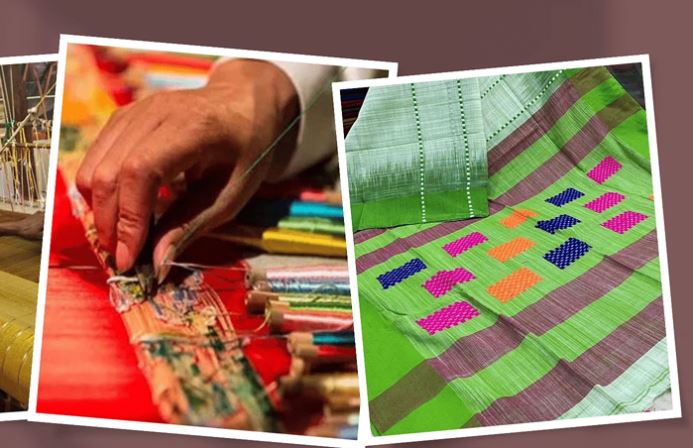
Published :
Updated :

Who owns Tangail saree? As the name of the saree indicates, it should naturally belong to Tangail, a district of Bangladesh, where it is produced. But no, in the market-driven and defined world of today, the right to ownership of a product historically known to have originated in a particular geographical region and thus becoming a part of the local heritage and culture may not automatically go to its place of origin or to the people who produce it. In a litigious global marketplace, where anything under the sun, be that a material object or an abstract idea, there is the danger of its being claimed by others who may not have any natural or historical link to it. Hence are the laws in the form of patents, copyright and trademarks to protect any creation of the mind that include inventions, literary and artistic works, designs, symbols, names and images used in commerce. Similarly, the Geographical Indication (GI), is a sign used on products that have a specific geographical origin and possesses qualities or a reputation that are due to that origin. And to function as a GI, a sign must identify a product as originating in a given place. And various relevant international treaties administered by the World Intellectual Property Organisation (WIPO), a specialised agency of the UN, deal partly or entirely with the protection of geographical indications (GIs).
Accordingly, countries have formulated their own laws to lay claim to things within their national boundaries that humans produce or are products of nature, both living and inanimate, by assigning the required GI tag to them. Though Bangladesh in 2013 formulated its own law to this effect entitled, the Geographical Indications Goods (Registration and Protection) Act, 2013, it could not establish its GI right on Tangail saree. But India did and claimed its GI right to Tangail saree through a post on the official Facebook page of the country's cultural ministry on the first day of this month. Of course, it gave its explanation as necessary to justify its claim. It said that Tangail saree originated in West Bengal, while the Indian state's chief minister, Mamata Banerjee, in an X (former Twitter) post described Tangail saree as a handloom saree item of West Bengal. According to reports, the president of the Tangail saree traders' association, Raghunath Basak, dismissed the Indian claim that Tangail saree was a product of West Bengal saying it (Tangail saree) rightfully belongs to the Tagail region of Bangladesh. Notably, the Basak community of Tangail is the original producer of Tangail saree and has been in this occupation for about 250 years. Some members of this community migrated to the Nadia district of West Bengal during the partition of India in 1947 and later in 1971 during the Liberation War. Unsurprisingly, after settling down in Nadia of West Bengal, they again began to pursue their ancestral occupation of weaving sarees resembling those of Tangail in Bangladesh. The Department of Patents, Designs and Trademarks (DPDT) under the industry ministry is responsible for providing GI rights to local products through the due process of applying to WIPO. The question is-- what was DPDT doing when its Indian counterpart (patent, design and trademarks department under the country's commerce ministry) gave recognition to Tangail saree as their own product through issuing GI certification to that effect on January 2, 2024? Complaining is one thing, but it is quite another to be smart. It is now Bangladesh's turn to be smarter and use all means, both legal and diplomatic, to reclaim its GI right to Tangail saree. It can also approach WIPO and other relevant international bodies for the purpose.
sfalim.ds@gmail.com


 For all latest news, follow The Financial Express Google News channel.
For all latest news, follow The Financial Express Google News channel.